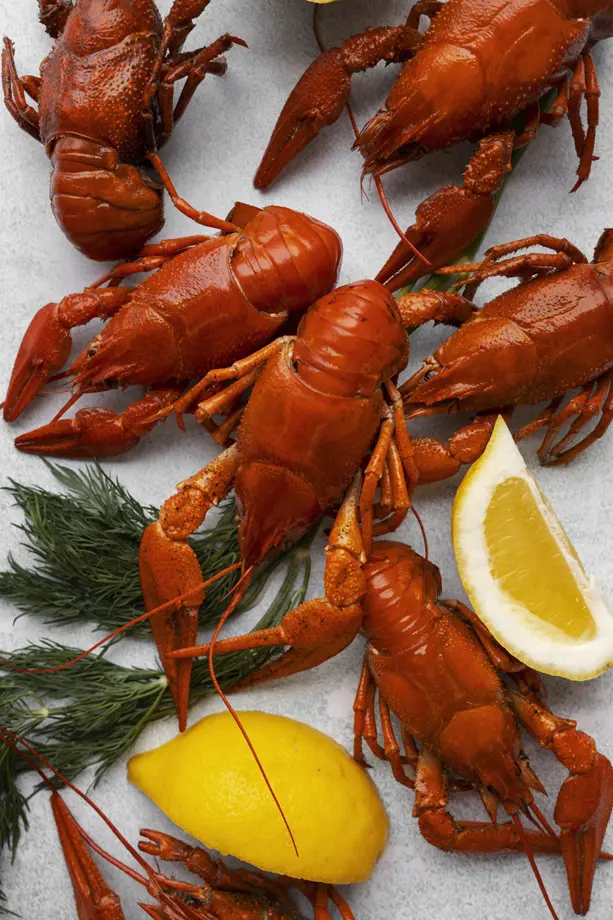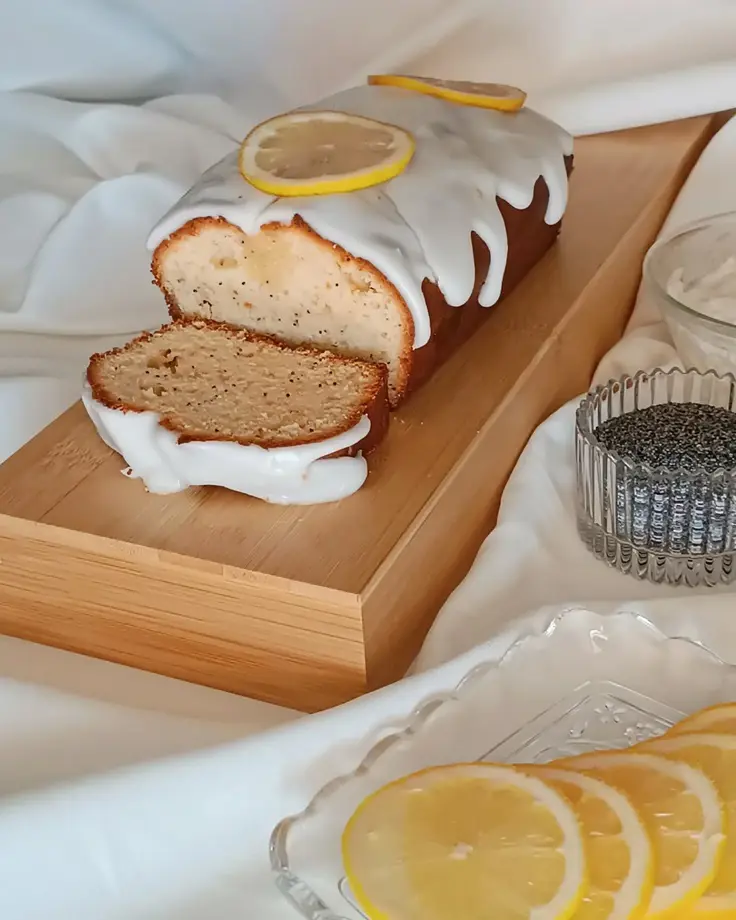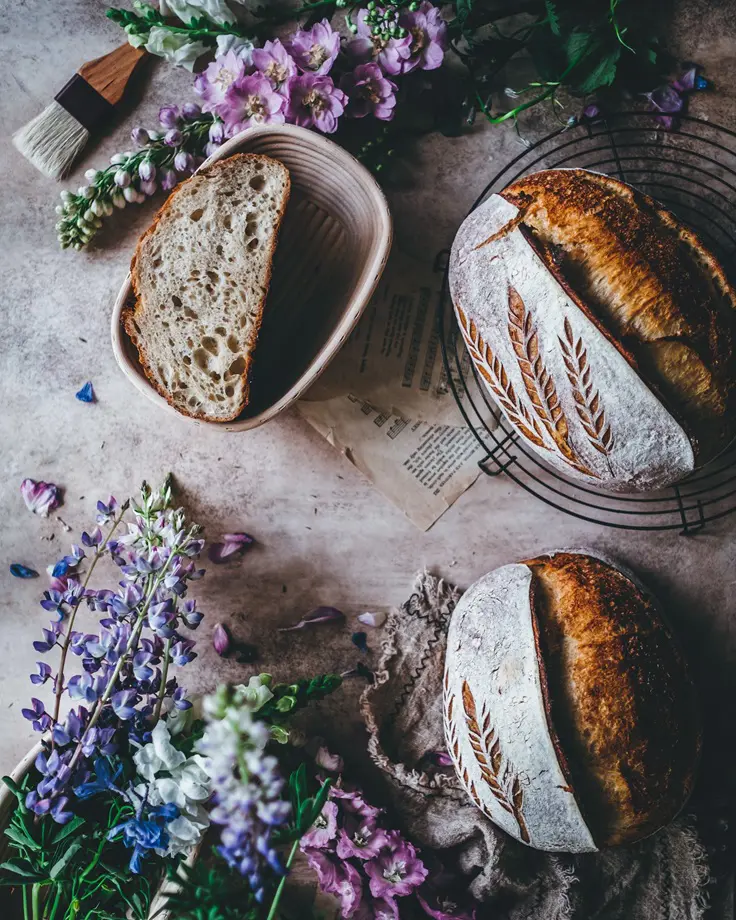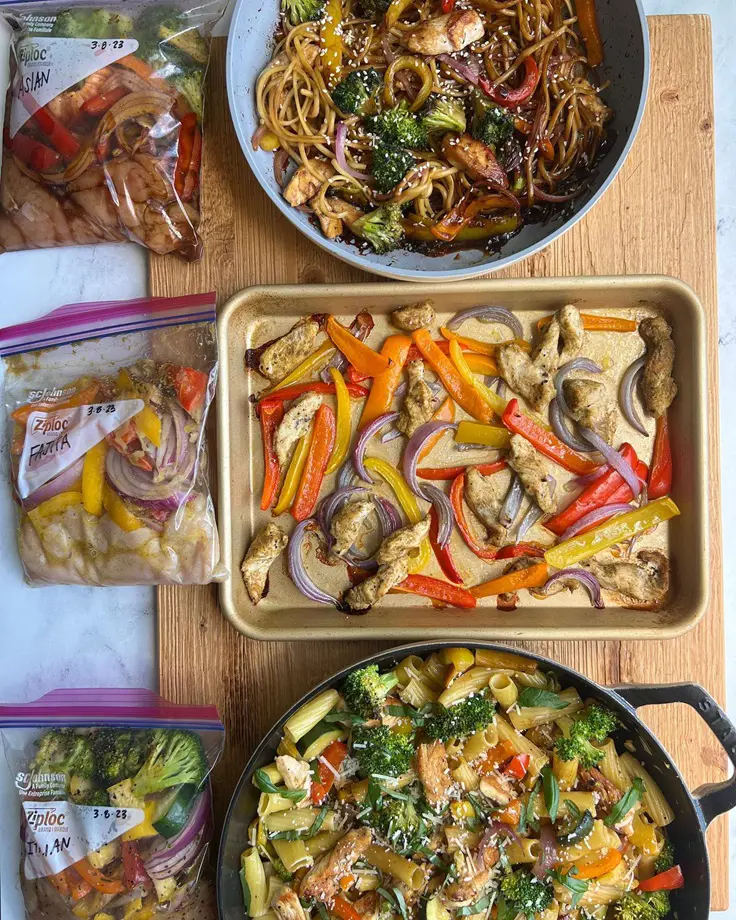How To Make Ginger Tea: Ginger Tea Recipe With Fresh Ginger
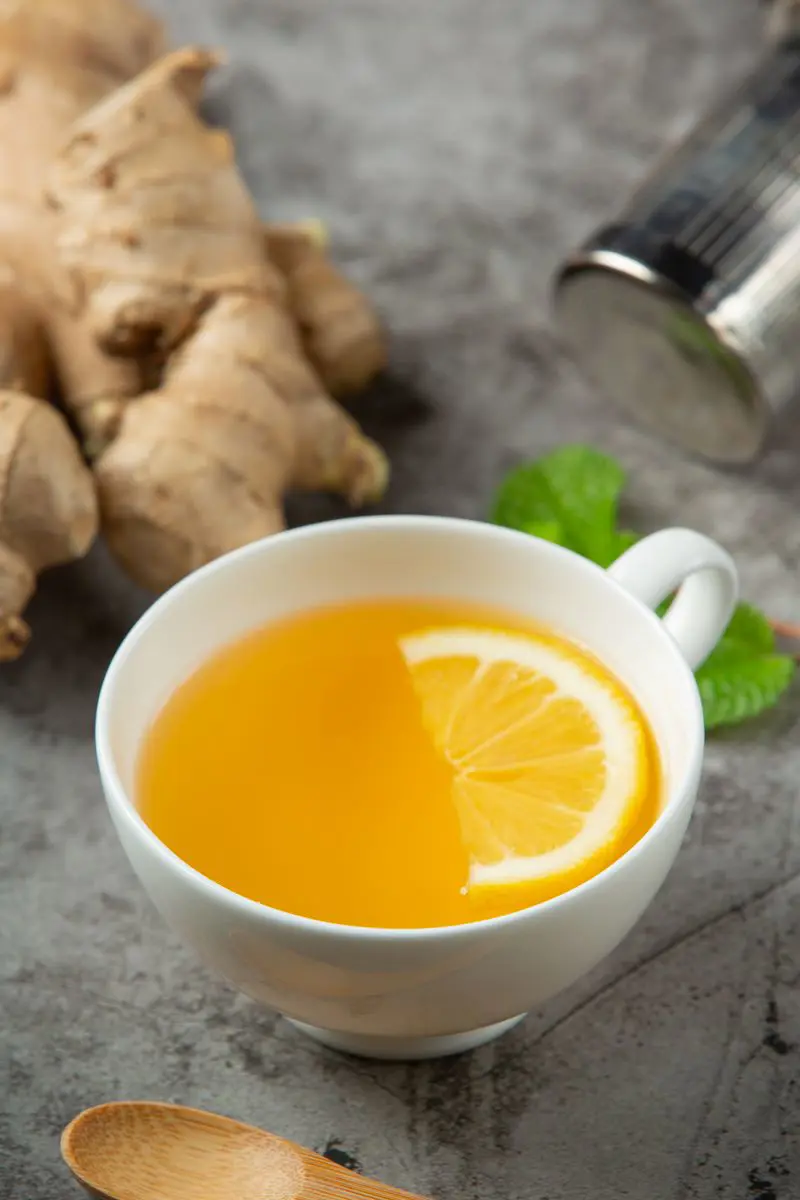
This post may contain affiliate links. If you make a purchase through links on our site, we may earn a commission.
Ginger Tea is an herbal drink made from ginger, an irregular-shaped spice that tastes spicy in itself. This drink has been consumed for decades and centuries due to its benefits which have been stated in numerous folk medications.
This tonic is believed to have been produced over five thousand years to cure various orders of illness. Here, we help you discover recipes on how to prepare this liquid refreshment, which is also a common herbal beverage in Asian, Arabic as well as Indian traditions.
Choosing The Right Ginger For Tea
The most relatable word to describe a ginger is an all-rounder. This very rhizome can be used as a spice, flavoring agent, or herb to cure so many issues in folk medicine. To be able to garner all the benefits of this magical underground stem, these need to mature, and here are some of the ways to recognize the perfect ginger for choosing:
Color
When seen from a small distance, the skin of the ginger must be smooth and should look tanned with a little shine. As for the flesh, they are usually lighter in the shade and yellow in color.
In the case of finding the flesh brown or dark in color, green spots on the skin, and blemishes and discoloration, it indicates that the ginger has gone bad and should be avoided.
Texture
When the fingers run over the stem, its body should feel firm under the touch. However, the skin should also be easy to nick when trying to scrape from the nails.
If the ginger has any soft spots that are found to be either mushy or spongy, it is a clear indication that the ginger is past its prime. Thus will have to be discarded.
Weight
This underground stem carries lots of moisture in itself which is why these are bulky and when the weight of the undried moisture is added to the flesh, it will make the ginger weigh heavier in comparison to their small size.
However, the moisture will dry out when the ginger gets old, and also won't give much flavor or taste thus can be taken off the choice when purchasing.
Aroma
Naturally, fresh ginger releases a spicy scent that carries a subtle sweetness to it. This smell is sharp and can be smelled if sniffed from nearby even with the skin on.
As for the case in which there is no aroma, it can be because the ginger might not be fresh. But if there is an unpleasant odor emitting from the ginger when sniffed, it must be discarded immediately.
Ingredients And Tools For Ginger Tea
Here are the tools and the ingredients that will be used in the process of making ginger tea. These tools and ingredients have been divided into two types the first is the must-have and the second are the optional choices that can be made as per the preferences:
Must-Have Tools And Ingredients
- Ginger: Fresh ginger makes the biggest contribution to ginger tea as most of the flavor of the tea comes from fresh ginger.
- Cutting Board and Knife: Placing ginger over the cutting board will stabilize it before giving it a desired cut with the knife without destroying the sharpness of the blade.
- Water: To make the ginger tea, water will be required to boil the ingredients to extract all the flavors and blend them together.
- Tea Pot and Strainer: The use of strainer is to strain the tea to fill the teapot which will maintain the temperature of the tea when serving later.
- Stove and Saucepan: The saucepan will be the vessel that will be used to boil the tea which will be placed over the stove that will provide gradual heat to boil the tea.
- Tea Cup: Teacups will be used to serve the tea at the very end of the process.
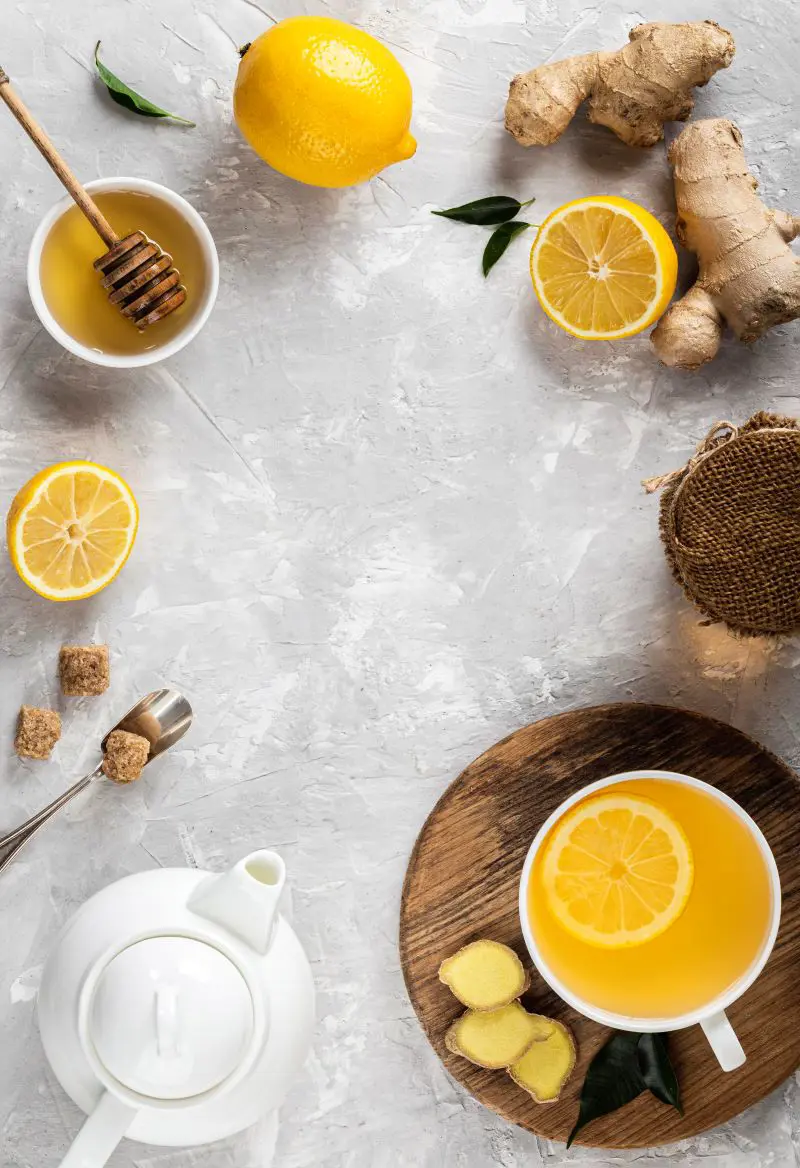
Optional Tools And Ingredients
- Honey: The natural sweetness of the honey brings pops out all the blended flavors together upgrading the taste of the tea for sweet lovers.
- Flavors: Because their flavor complements the warmness of ginger, star anise, cinnamon, cardamom, nutmeg, clove, and black pepper are some of the commonly available flavorings that can be used in the tea for more flavor.
- Lemon: The sour taste of lemon juice elevates the taste of ginger tea as it helps neutralize the strong but warm spiciness of ginger.
- Herbs: Some green herbs like mint leaves, lemongrass, willow, etc do complement the spiciness of ginger, giving the tea a well-balanced flavoring smell.
- Spoon: Peeling the skin can also be done with a spoon which is to scrape the skin off the ginger before cutting it into small pieces. Spoon can also be used to stir the tea.
- Grater: Grating is done to bring out most of the flavors from the ginger as they have been grated into smaller pieces.
Initial Preparation To Make Ginger Tea
Wash
Put the ginger under the running cold water to clean the debris and dirt off the surface. As this stem grows underground, there can be soil that is left attached in the gaps of each node and internode. Which will have to be scrubbed off properly with hands.
Peel
After washing the ginger clean, take a spoon and dig it lightly into the ginger to scrape the skin off. This is an optional process, which can either be skipped in the case the skin is preferred to be added to the tea.
Clean
After peeling is done, running the ginger under cold water once again for the final wash is necessary to get rid of any residue left during the scraping of the skin. This will make the ginger thoroughly clean without any remnants left.
Cut, Grate Or Smash
Taking the ginger on a cutting board, those pieces of ginger can be cut into desired sizes, grated small, or can also be hit with hands or the flat of the knife or something heavy to smash the ginger into mush to bring most of the flavors out in the tea.
How To Make Ginger Tea
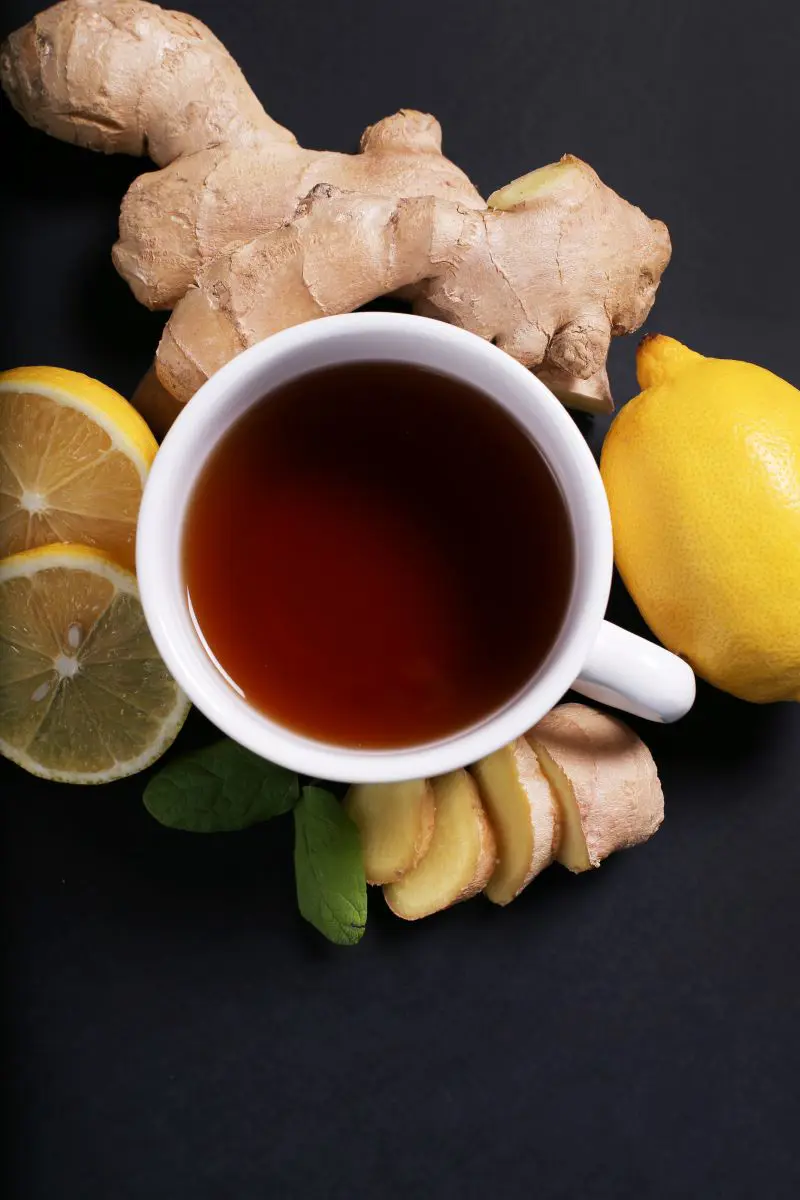
Making ginger tea after all the preparation is extremely easy task. The step-by-step process is given below:
Boil
Take a cup of clean water in a saucepan and put them over the stove turning up the heat to the maximum. As the water is heating, cover it and let it come to a boil undisturbed.
Add ingredients
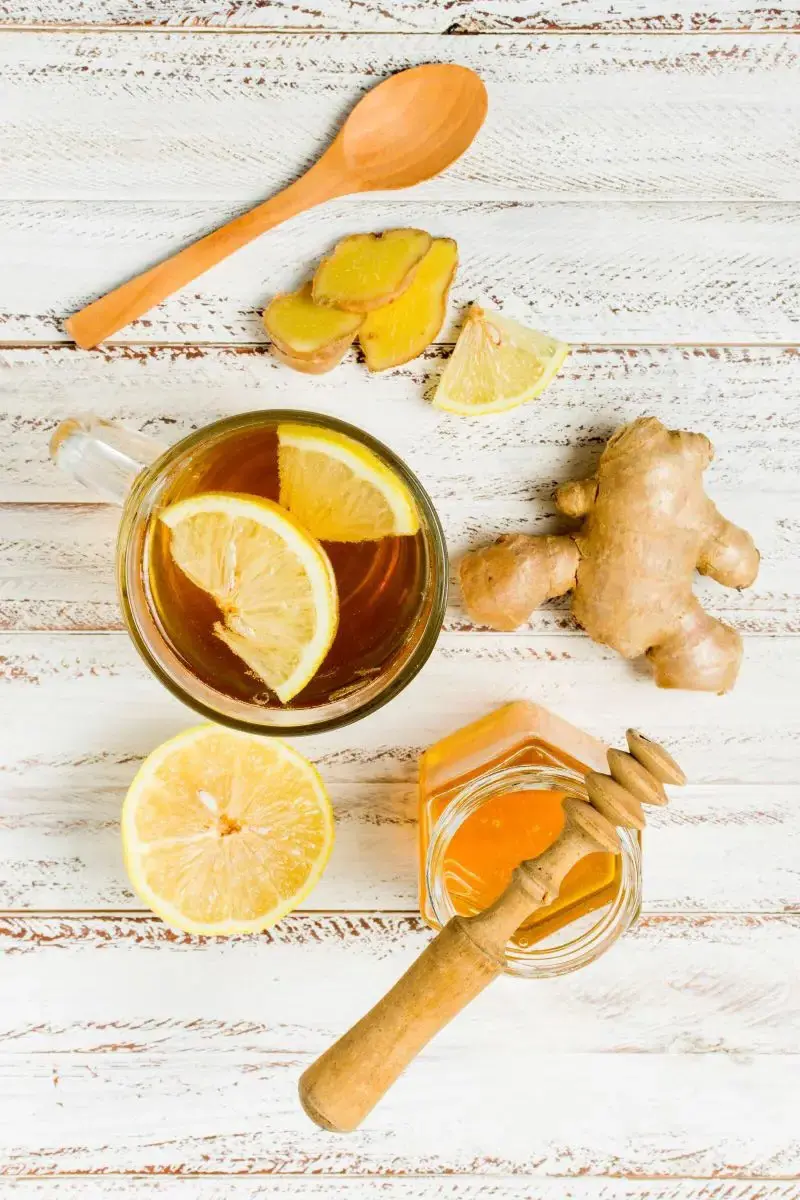
Once the water is about to boil, add the ingredients one by one except for sweeteners and lemon, as per the preference, and let the water come to a vigorous boil.
Simmer
Once the water is boiling vigorously, cover the saucepan with a lid and then turn the heat of the stove down to medium to low temperature, and let the water simmer with all the ingredients in it.
Check
After simmering until the aroma spreads all over, take the lid off and check if the tea is ready. To do so, see the color of the tea to know whether the water has extracted the color from the ingredients. If not done, simmer some more.
Strain

If the tea is done, use a strainer to strain the tea. The liquid obtained below is collected in a serving pot and the residue is collected inside the strainer. After straining let the tea sit inside the pot covered with the lid for some time until the temperature drops to warm.
Serve
After the tea becomes warm, it now is time to serve the tea. One thing to remember while pouring the tea into the cup is to keep the warmth of the tea on the hotter side which is less than the burning or more temperature than the cold before handing the tea over to others to drink.
How Long Does It Take To Make Ginger Tea
To prepare the ginger tea, the very first step to be followed is preparing the ingredients, which takes about 5 minutes. This will then be followed by boiling the water with the ginger inside which will require a maximum of 10 minutes.
After the water in the vessel boils, the ginger-added water should be simmered for some time to extract the oil and flavors from all the added ingredients. This simmering process will consume an additional 10 minutes of the time. As for serving the tea, it will need no more than 3 minutes even after honey is added.
However, before the tea is served, it must be set aside to lower the temperature which will take time of 5 minutes at least to 7 minutes at the most. Therefore, preparing to make the ginger tea to serving it in the teacup will take no more than 30 minutes at most. Although the invested time seems too much to make the tea, spending this much will ensure the optimal taste of the tea.
Pros And Cons Of Ginger Tea
Even though ginger tea is beneficial and nutritious for health, it also has its pros and cons that can be differentiated. Here is a detailed list of some of the pros and cons of ginger tea with their reasons:
Pros Of Ginger Tea
1. Better Digestion
The presence of gingerol compound in the tea stimulates gastric enzymes by producing bile as well as saliva which helps to improve digestion and relieve the stress of bloating.
2. Reduces Nausea
With gingerol, there is another compound in ginger tea which is called shogaol which increases gastrointestinal motility and also blocks the receptors that stimulate to trigger nausea.
3. Anti-inflammatory Properties
Adding two more compounds paradol and zingerone in the previously mentioned compounds, all four of these work to aid in reducing inflammation as well as pain.
4. Boosts Immunity
Both gingerols as well as shogaols have antioxidant properties that have been found to protect the damage formed in the cells and also help them boost the immune system.
5. Improves Cardiovascular Health
For the improvement of cardiovascular health, gingerol compound found in ginger tea helps to improve blood circulation which eventually is beneficial for the health of the heart.
6. Relieves Menstrual Cramps
The gingerol and shogaol components have capable properties like anti-inflammatory as well as pain relieving ones which work as an agent to reduce the cramps during the menstrual period.
Cons Of Ginger Tea
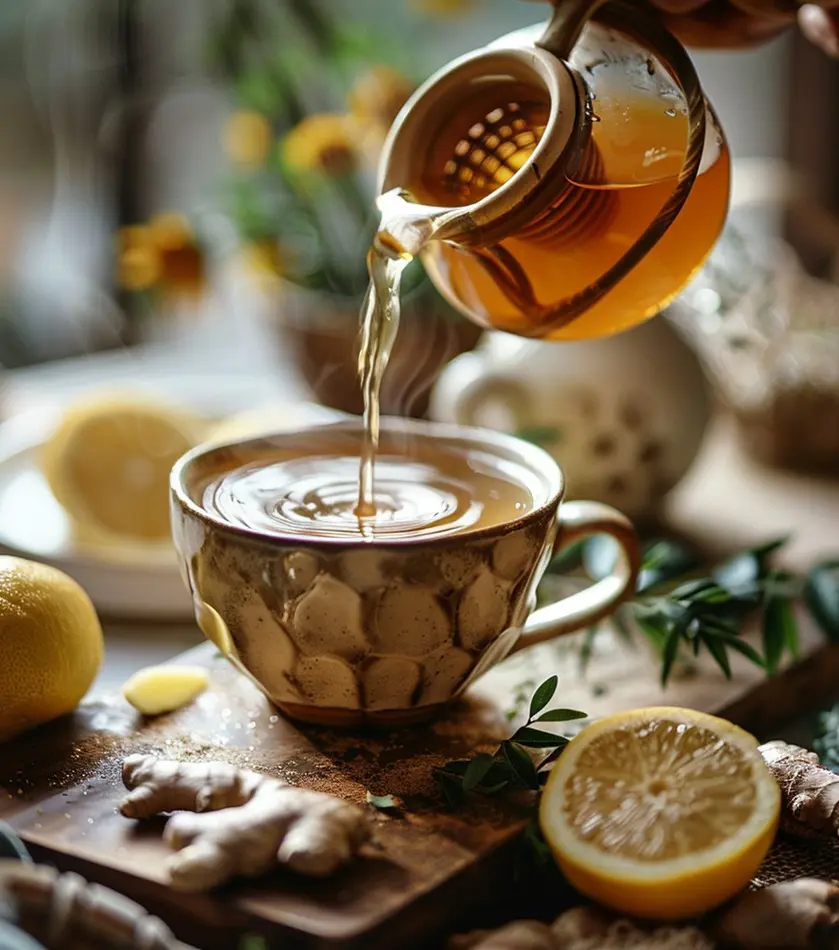
1. Stomach Upset
Although the gingerol compound in ginger tea helps in the digestion of food, consuming too much of it can irritate the stomach lining of some people which can cause upset stomach as well as diarrhea.
2. Blood Thinning
With so many benefits the ginger tea brings from the compound gingerol, it can even be problematic for people with bleeding disorders as the thinning of blood can lead to fatal results as well.
3. Allergy
Although not for all, some people may have allergies to ginger. It can either be due to the compounds or can also be due to other variables which can lead to itching, breathing problems, rashes, etc which can be mild but can also be fatal.
4. Gallstone
Drinking ginger tea makes the intake of gingerol easy which also stimulates to production of bile which may be good for others but can have problematic results when happens to patients with gallstones.
5. Pregnancy
The period of pregnancy is the most vulnerable stage for women. Even though ginger tea helps during morning sickness and nausea, it does carry other potential risks so is not recommended to be consumed too much.
Tips
Here are some of the tips about ginger tea and drinking it, which can prove to be fruitful if followed well.
-To improve the digestion process, drink ginger tea after meals as it will help to enhance bile production easing the discomfort of overeating.
-Drink warm ginger tea for the best health benefits because too hot has the risk of burning and the cold tea will go against the natural heat of the body harming more.
-The antimicrobial properties and anti-inflammatory properties of ginger tea soothe throat irritation caused by the cold or the flu.
-Ginger tea helps to digest and because of the naturally warming properties of ginger calms the nerves, this tea is a good choice to drink before bed.
-Drinking ginger tea regularly will benefit the body because the regular supply of antioxidants can help improve the metabolism of the body.
-The key to good health in the long term is moderation. Drinking ginger tea routinely without overdoing which is only 1 to 2 cups a day can help the body take in the nutrients as positively as possible.
Ginger Tea Variations
Ginger tea can be made in multiple ways. Some can be made with milk and some can be made without milk as well here are some of the variations of ginger tea.
Ginger Tea With Milk And Spices
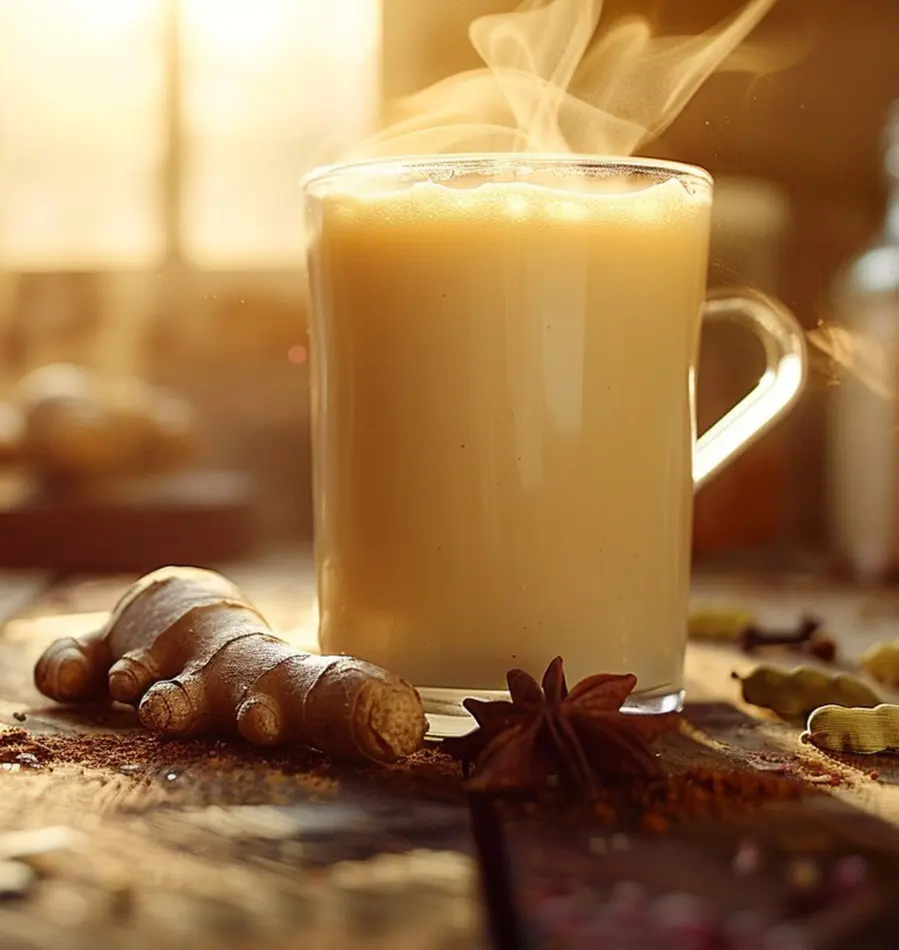
Boil water in a saucepan with grated ginger, cinnamon stick, cardamom, and cloves. Then add tea leaves and let everything infuse in water when simmering. As half of the water dries, add milk and then sweeteners of choice, preferably jaggery. Once everything comes to a boil strain it and enjoy.
In this variety, there are lot of flexibility for the ingredients, for dairy-free choices, plant-based milk can be added but the other spices will have to be adjusted according to the requirement of the taste preferences.
Ginger Cinnamon Tea
After the water is boiled in a saucepan, ginger grates as well as one cinnamon stick are added before turning the heat down to simmer. Once everything simmers, strain the tea and pour it into the cup to enjoy.
Adding honey is optional which can also be substituted with jaggery which will have to be added together with other ingredients before the water is set to simmer. Simple black tea leaves can be added for more flavor and color.
Ginger Turmeric Tea
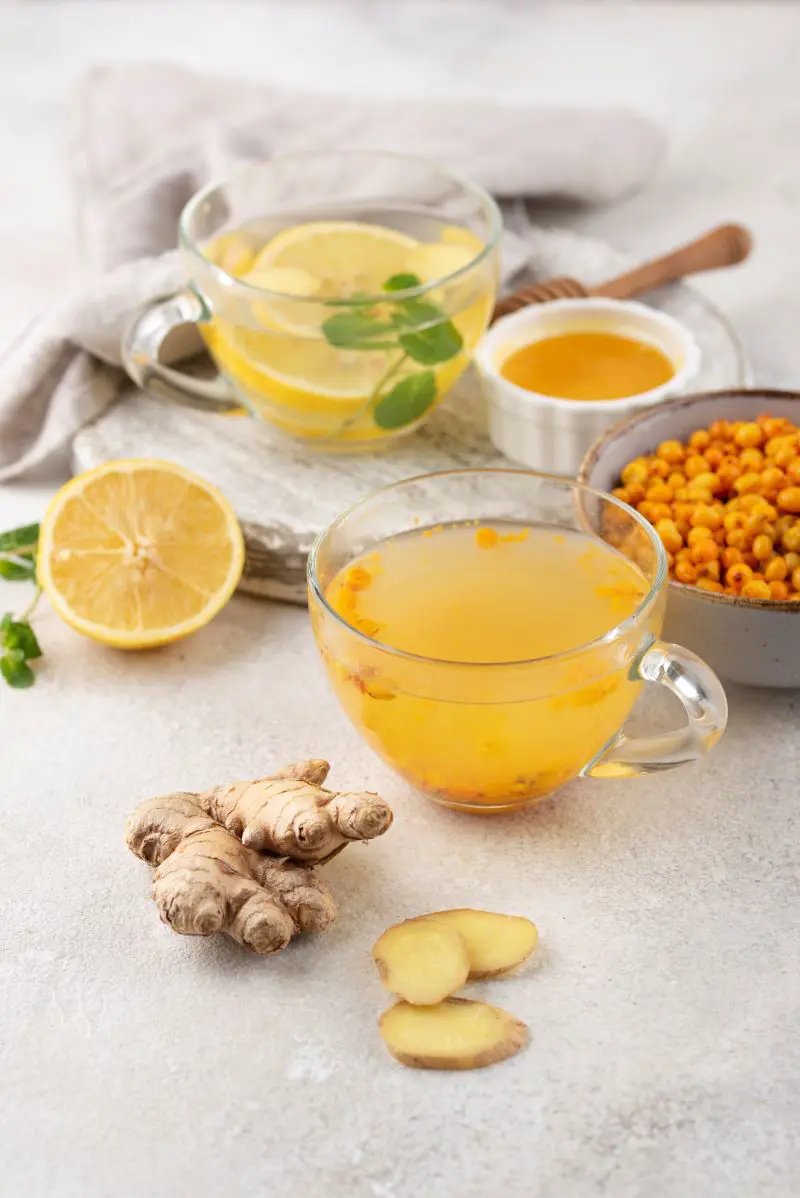
When the grated ginger is boiled together in water with fresh turmeric and black pepper, it gives a beautiful and mouthwatering color to the tea which starts from being yellow to reddish-orange by the time the tea is done simmering properly. This color of the tea can stimulate the appetite while the benefits this tea provides will go side-by-side.
In place of fresh turmeric, the powder can also be added as this can save some minutes of cooking time. With turmeric powder, some black tea leaves can also be added if preferred. As for the sweeteners, although jaggery can be added while cooking, adding honey at last, just before drinking also makes the tea taste good.
Recent posts
Lifestyle
Lifestyle
How To Eat Crawfish The Right Way
A crawfish is a small crustacean that resembles a tiny lobster. Though small in size, this freshwater creature is equally delicious as any other seafood, they are tender, sweet and a little salty. Enjoying crawfish may seem challenging as they are ti...
Lifestyle
Expert Ways To Eat Poppy Seeds
Poppy seeds are small yet powerful because of their nutty taste and crunchy texture. Mild and gentle addition to any dish, they are a staple ingredient in cuisines around the world; you can find them in curries in India and in baked goods in Europe. ...
Lifestyle
How To Stop Snoring: 15 Home Remedies To Get Rid Of
A huge part of population have to lose sleep just because of snoring. If we look at the data from the studies, it has been reported that around two thirds to half of the population are affected by this common issue. What makes this problem more conce...
Lifestyle
Is Sourdough Bread Really Healthy?
Sourdough bread is not just another bread; it's a time-honored and naturally fermented food. With the use of all-natural ingredients, even the yeast, the bread has a unique flavor and texture to offer. Chewy, crusty and sour, sourdough bread is appre...
Lifestyle
20 Foods That Are Bad for Your Heart
Sadly, cardiovascular disease ends one life every 33 seconds, and that, indeed is an extremely tragic moment. Hence, giving your heart great importance and keeping it healthy is so important for overall health, and what you eat can make a big differe...
Lifestyle
20 Foods That You Can’t Freeze
Freezing foods can be a realistic time-saver, it is one of the most convenient ways to preserve food in our kitchens for later use. It can do both, reduce food waste as well as save time in food preparation. However, there are exceptional cases...
